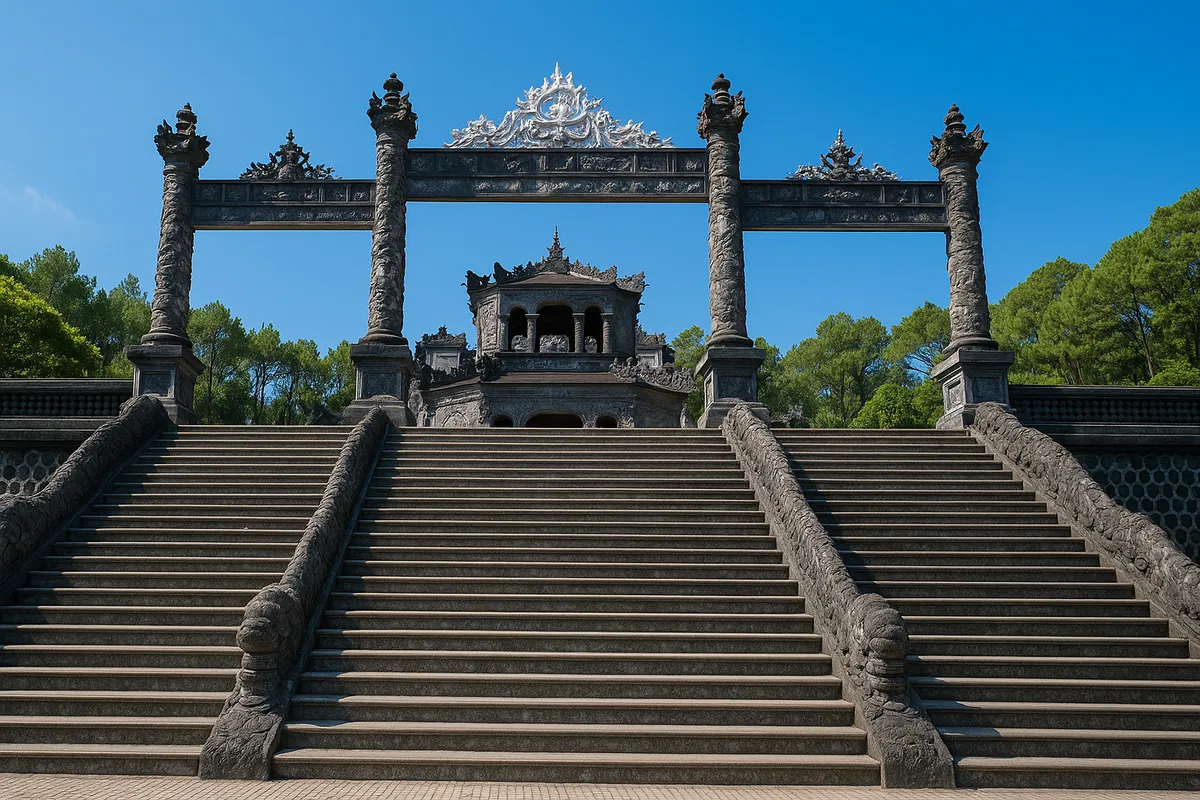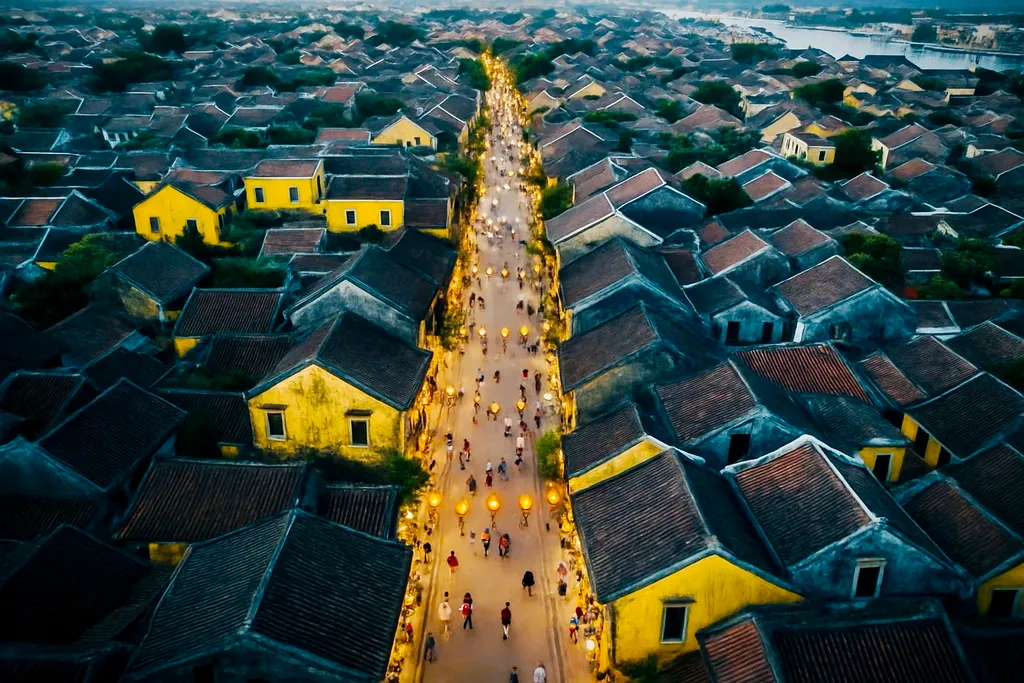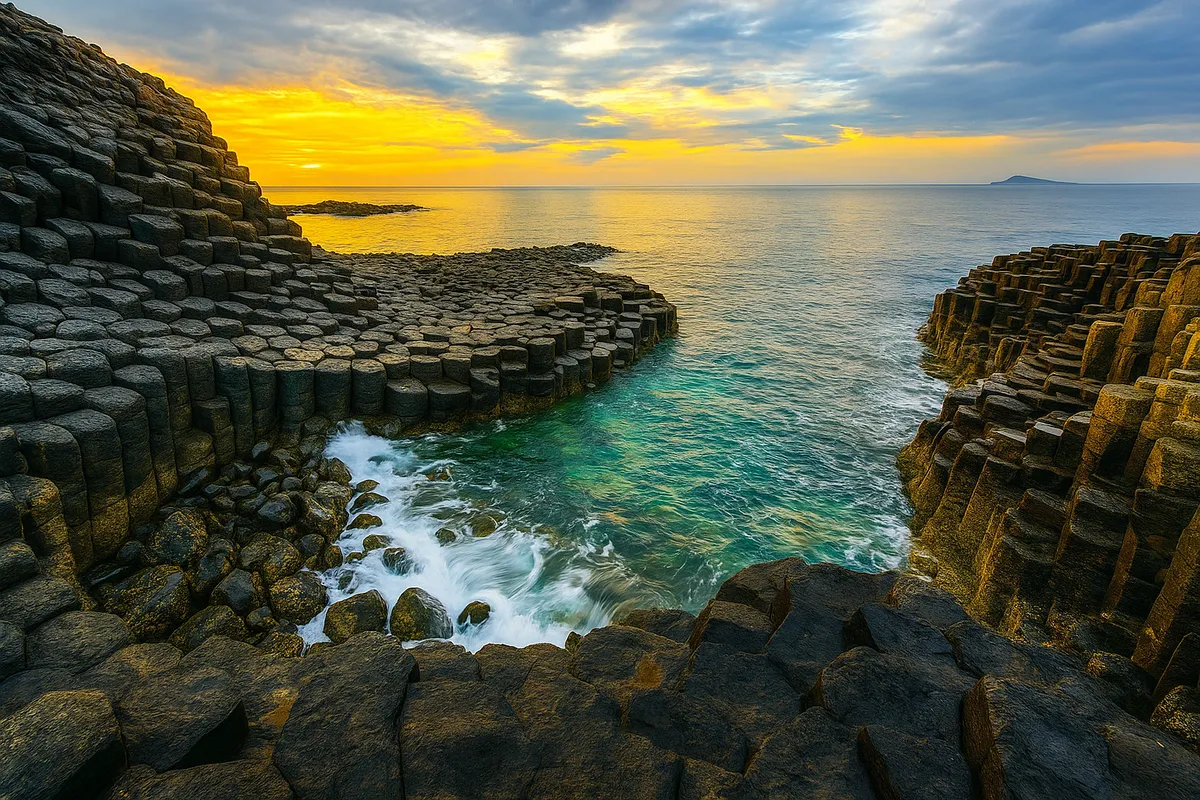Khai Dinh Tomb and the secrets that make you want to see it with your own eyes
- Friday, May 23, 2025, 21:30 (GMT+7)
Khai Dinh Tomb and the secrets that make you want to see it with your own eyes
Amid the whispering pine forest on Chau Chu Hill, where clouds drift like endless streams of thought through time, stands a strange stone structure that seems to have risen from the dream of someone enchanted by both fairy tales and power. People call it the Khai Dinh Mausoleum, but that name alone does not suffice. This is not just a burial place. It is a declaration made of cement and ceramics, an unusual symphony that resounds through the solemn thousand-year-old capital of Hue. It sparkles like crystal but feels as cold as the abandoned walls of a ruined fortress. Its form reflects modern Western aesthetics, but its soul beats in harmony with the Eastern sky and earth.
The path leading to the mausoleum spans 127 steps, paved with soft gray stones, flowing like a silk ribbon across the hillside. Visitors ascend not only with their feet but also with their imagination. Each step is a journey into another dimension where time is no longer linear, where you are no longer a tourist but a witness to something left unspoken. Ahead stands a majestic three-gate entrance, like an old picture frame enclosing a mystical scene beyond. The space begins to tighten, silence envelops everything, and all the senses are drawn into a visual illusion where the old and the new, the sacred and the ordinary, the gentle and the sharp coexist in fragile balance.
As you step into the courtyard, two rows of mandarin statues flank your path. Unlike the identical figures seen in other tombs, each here wears a distinct expression and posture. One looks like he is listening. Another seems deep in thought. A third bows slightly, as if burdened by a secret only he knows. These statues are not the same height, as if reflecting a fading dynasty where the boundary between order and confusion is slowly dissolving with every breath of history.
Then you enter Khai Thanh Hall. The heart of the mausoleum. A place where everything seems to glow. On the ceiling are three hand-painted reliefs of nine dragons hidden in clouds, created without templates. Each dragon winds through the mist in free, expressive strokes, vivid enough to make you almost hear a faint hissing sound. Under soft recessed lights, the golden reliefs and silver inlays shimmer like a dream in motion. This is not the usual solemn grandeur of ancient tombs. It is a flamboyant beauty, radiant and even a bit defiant.
At the center sits the statue of Emperor Khai Dinh, seated regally on a golden throne, wearing a European crown. It is strange to see a Vietnamese monarch in Western attire, but the longer you look, the more the strangeness fades. In the eyes of the stone figure is the gaze of someone living in a time of transition, unable to resist the tide of change but unwilling to be swept away completely. It is a very human struggle, deeply real and perhaps achingly lonely.
They say that Khai Dinh’s tomb is the only one in the Nguyen dynasty built with reinforced concrete, a material foreign to the traditions of the imperial capital. It lacks the elegance of wood, the mystery of stone, but it endures with the same tenacity as the emperor’s desire to leave a mark in a world slipping out of grasp. He died after nine years of rule, but the mausoleum took eleven years to complete, which means he never saw its final form. His actual grave lies nearly nine meters underground, buried so deeply that the concrete had to be broken to reach it, as if he wished to guard that last piece of his soul from the eyes of posterity.
Amid the vibrant mosaic walls, small details that seem meaningless begin to haunt the mind. A painted airplane on the ceiling. A porcelain peacock curled in a corner. A line of Chinese characters naming the artisans from Phu Lang and Bat Trang. Each is a hidden code. Together they do not tell the story of a king, but of an era caught between permanence and disappearance, between the past and the future.
Khai Dinh Mausoleum is the only one in Hue that is illuminated at night. The lights are not merely for tourists. They seem to keep a dream awake. When night falls, the tomb rises from the earth, no longer just a structure but a living spirit. The stone walls seem to hold blood and bones. The dome seems to breathe. And each step becomes a low note in a symphony that history has not yet finished composing.
What makes this place special is not its grandeur, but a feeling that cannot be defined. It is not a palace, not a shrine, not a typical tomb. It feels like a black and white film stitched together with Hollywood technique but still breathing with the soul of Vietnam. It is not something to believe by hearsay. You must see it with your own eyes, touch it with your hands, and feel it in your heart.
Few know that every ceramic piece in the mausoleum was crafted by hundreds of artisans from the North, brought to Hue by river, by road, and sometimes carried by hand. That each mosaic was made not from fixed blueprints, but from instinct, experience, and even daring. These things are not written on the signboard outside, but you will sense them if you stay long enough and listen with respect.
Khai Dinh Mausoleum does not exist for you to simply admire. It asks to be understood. It is not fairy-tale beautiful, not palace-mighty, but strange, profound, and as intricate as a poem without rhyme. You do not come here to tick off another destination, but to see a piece of yourself in the turning page of history, where every assumption is challenged, and everything thought to be old begins to shine anew.
If one day you find yourself standing before its gate, with the wind brushing in from the pines and the light filtering through white clouds, remember this. This is not the end of a dynasty. It is the beginning of countless unanswered questions. As if the king, buried deep beneath the ground, is still looking up at you, waiting for someone brave enough to understand the dream he left behind.

 CHECKIN.VN
CHECKIN.VN








Share on